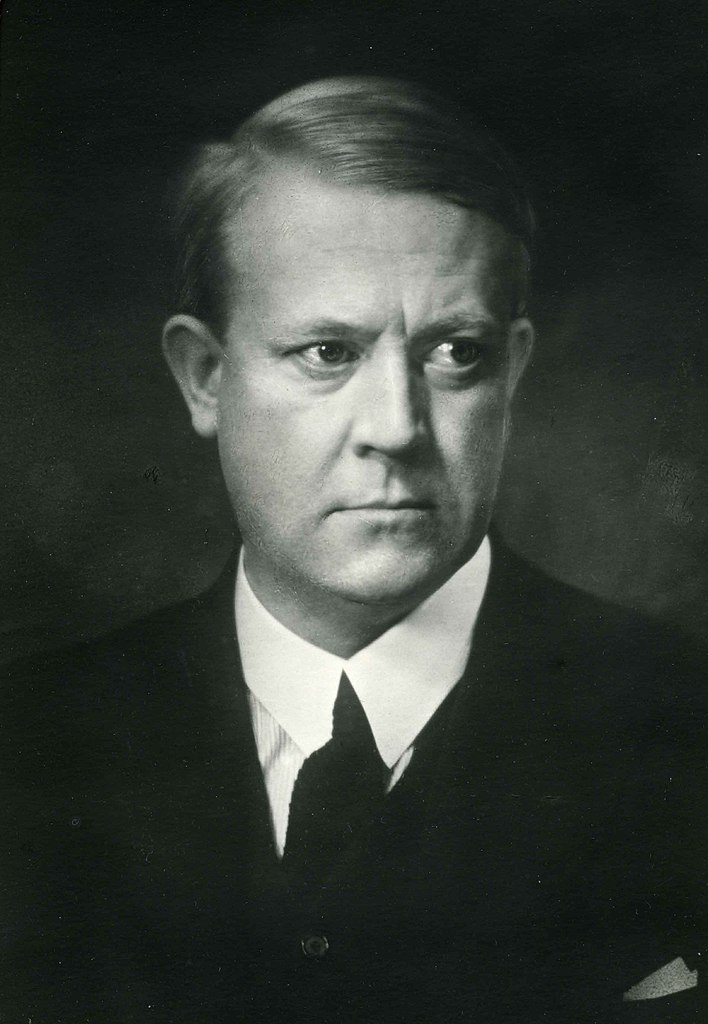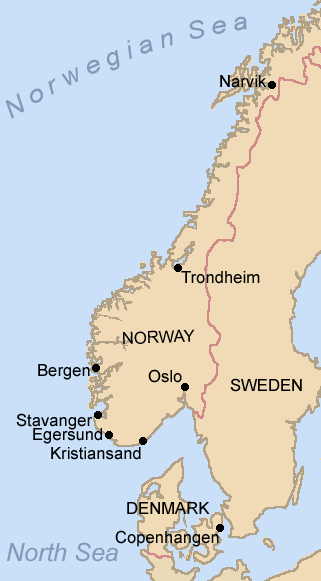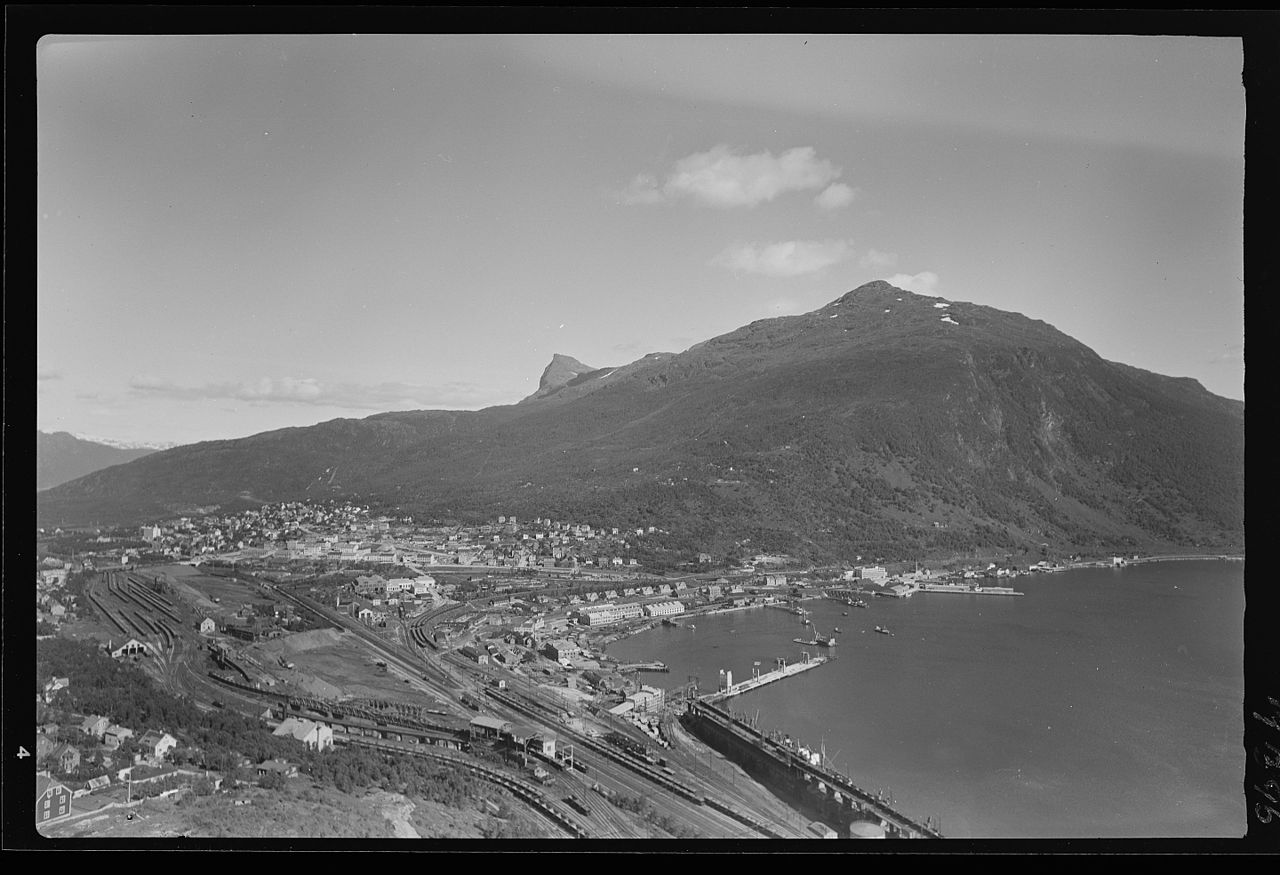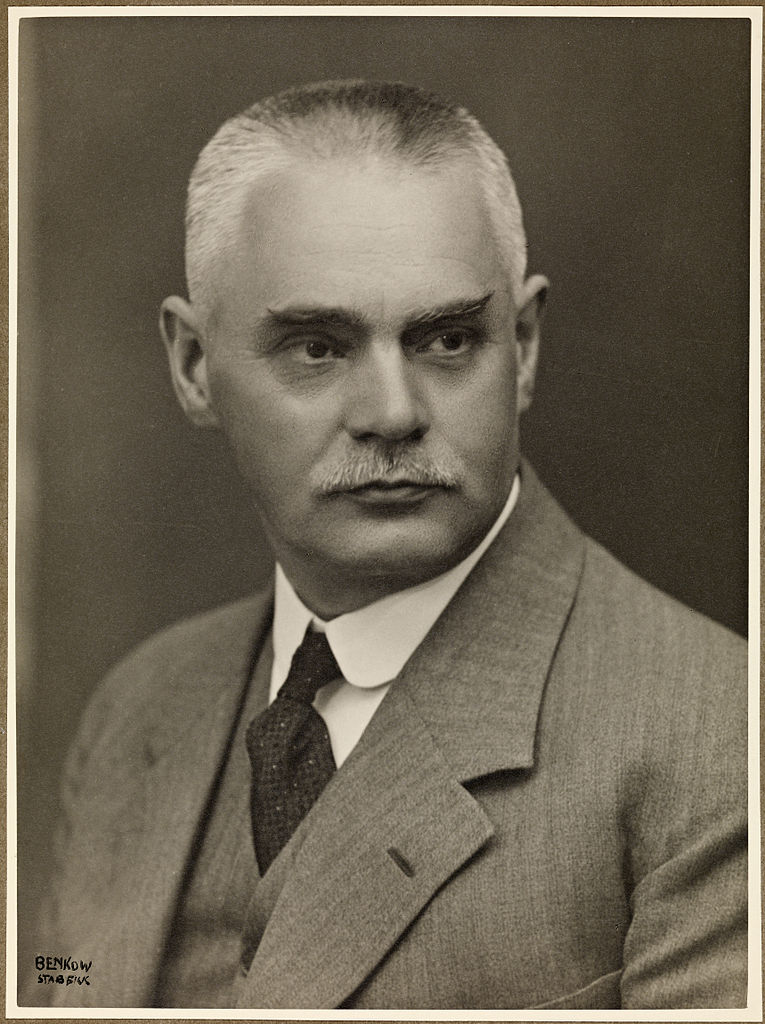When WWII broke out, Hitler had no plans for Scandinavia. The Nordic nations had proclaimed neutrality, and he had his hands full with operations closer to home. But this began to change thanks to a visit from a Norwegian Nazi named Vidkun Quisling in December 1939, who claimed that the Norwegian government was conspiring with the British to join the Allies. Hitler ordered plans be made for intervention if this was true, and these were accelerated in the wake of the Altmark incident in January 1940, which convinced him that Quisling's accusations were true. Orders were given to implement what was known as Operation Weserübung.

Vidkun Quisling
The basic plan was fairly simple. The assault force would be carried by various warships of the Kriegsmarine, as the Germans were lacking in landing craft. Two regiments would be landed around Oslo, in connection with an airborne assault, while one regiment apiece was detailed to Bergen, Trondheim, Narvik and Kristiansand. Reinforcements would come by transport, some of which would have to be dispatched well before the warships. The biggest threat foreseen was intervention by the Royal Navy, and there was considerable friction between the Kriegsmarine, who wanted to withdraw the ships as quickly as possible, and the Heer, who wanted them left to protect the forces ashore, at least until they could make the Norwegian coastal defenses operational. Ultimately, the Kriegsmarine largely won. The Lufwaffe proved its useful cooperative self, and Goering refused to place his forces under unified command, while the other services were skeptical of his claims that the bombers would protect them from the RN.
While all of this sounds like a lead-up to a hilarious disaster, the Norwegians were in even worse shape. Their military had been heavily cut in the interwar years, and even the increasing international tension in the late 30s hadn't been enough to convince the government, ideologically committed to pacifism, to rearm. Only 19 of the Royal Norwegian Navy's 59 warships had been launched after WWI, and nearly that many predated 1900. In even worse shape were the coastal defenses, which had been formidable when constructed in the 1890s,1 but were now badly obsolete and poorly manned. The Army was in even worse shape, with the vast majority of its strength provided by reservists that would not be mobilized until an attack was imminent.

The targets for Weserübung
Into this came the Allies. In November 1939, the Soviets invaded Finland, much to the discomfort of the Allies, who were well aware of the recent Soviet-German friendship. Discussions began about sending troops to help the Finns, probably via Narvik in northern Norway, as well as using this as a pretext to secure the vital iron ore fields in northern Sweden that provided a substantial fraction of Germany's iron. 150,000 troops were detailed to this operation, which was to be conducted despite diplomatic rejections on the part of both Norway and Sweden. By March 13th, everything was ready and the first troops were starting to embark, but the Finns decided to negotiate with the Soviets, who they had stood off for several months. Much to the relief of Prime Minister Neville Chamberlain, the plan could be called off.
However, there was still political pressure, particularly from the French, for intervention in Scandinavia, and plans were made to mine Norwegian coastal waters to force the ore traffic offshore, within reach of the British. The British accepted this, but only as a quid pro quo for their scheme to float mines down the Rhine to attack German bridges and barge traffic. Almost as an afterthought, plans were also made to land troops around Narvik, initially only if the Germans took action in response, although this detail was at some points lost in the shuffle and the plan expanded to Bergen, Trondheim and Stavangar. Rumors of these discussions started to leak in late March, although the Norwegian ambassadors in Paris and London reported back that no definite plans had been made, and the whole thing was delayed when the French became intransigent about the river mining scheme.

Ore docks in Narvik in the 40s
German intelligence began to detect signs of these plans as early as the beginning of March, and work on Weserübung was accelerated. By the end of that month, it became clear that Allied intervention was a real possibility, and that the window of opportunity for the German plan was closing thanks to the lengthening days as summer approached. The final order to go was given on April 1st, with an execution date of the 9th. The first supply ships would sail within 48 hours. The Russians were informed, with assurances that German occupation of northern Norway wouldn't last past the end of the war with Britain.
Astonishingly, the only country that figured out the invasion was coming was Sweden. Allied intelligence was still poorly organized, and nobody managed to put all of the information together in time, even when the British naval attache in Denmark saw the ships sailing past on the 7th. In Berlin, word of the invasion was leaked by anti-Nazis within the Abwehr, German military intelligence, to the Dutch, who passed it on to the Danes and Norwegians. However, the Norwegian embassy in Berlin somehow left out the threat to their own country, and other warnings from both Denmark and Sweden to the Norwegian military were not passed to the government. Even when the British and French sent a stern note effectively justifying their coming intervention to the Norwegian Foreign Minister on the evening of the 5th, he downplayed it, and nothing was done to strengthen the country's defenses.

Norwegian Foreign Minister Halvdan Koht
But even as the Norwegian public was being reassured of their country's security, forces from both sides were already converging on it. The British had sent two groups to lay mines off the Norwegian coast, covered by a force built around Renown in case the Norwegian coastal defense ships intervened. The first of the German transports, bound for Narvik, had sailed in the early hours of the 3rd, followed by a stream of merchant vessels over the next few days, as needed to reach the various targets on time. Some of these took the Norwegian coastal lanes, with inspection of their holds made impossible by piles of coal on the hatches, supposedly bound for Murmansk. The Norwegian officers were suspicious, but higher-ups disregarded this warning sign as they had so many others. This would cost their country dearly when the Germans arrived on April 9th.2
1 This made them broadly contemporary to the American Endicott program. ⇑
2 Thanks to ketil and Rolf Andreassen for proofreading this series. ⇑

Comments
Does anyone have an idea to what extent the British professed desirer to aid the Finns was genuine or if it was just a ruse to secure territory?
There were definitely elements of both in their thinking. There was a genuine desire to help Finland, and a reasonable amount of aid was delivered before the end of the Winter War, but the grab for the Swedish iron ore was pretty cynical. Honestly, nobody comes out looking good from the Scandinavian diplomacy in WWII. Except maybe the Swedish government.
Maybe a link to Quisling's wiki page?
Money quote: Quisling was put on trial during the legal purge in Norway after World War II. He was found guilty of charges including embezzlement, murder and high treason against the Norwegian state, and was sentenced to death. He was executed by firing squad at Akershus Fortress, Oslo, on 24 October 1945. The word "quisling" became a byword for "collaborator" or "traitor" in several languages, reflecting the contempt with which Quisling's conduct has been regarded, both at the time and since his death.
Imagine a counter-factual where Sweden decides they cannot tolerate being between Axis ally Finland and Axis occupied Norway. The day the first German troops land in Norway, the Swedish Army crosses the border and 'The Northern Campaign' begins. No side (and there are three sides) has a good strategy, nor good intelligence.
The result could be the stuff of legends. A crazy war where luck and timing makes the difference.
Ya know how everyone studies Rommel, even though the forces involved were small. Could be like that, with more confusion!
@Kit, I don't think Finland was an ally of the Axis in late 1940 when Norway was invaded. Finland had signed a peace treaty with the USSR, but not happily, and had lost a fair bit of territory to them. The USSR was still an Axis power at this stage, so Finland was against the Axis if anything.
Sweden was actually the only country that figured out what was going on before the invasion. They seem to have just decided that it was worth the risk, and stuck with it. They were in a pretty bad place to try to fight Germany, because all of their trade had to come through the Baltic. Or Narvik, but their rail network wasn't set up to supply them through that. (A Blunted Sickle talks about that a lot.)